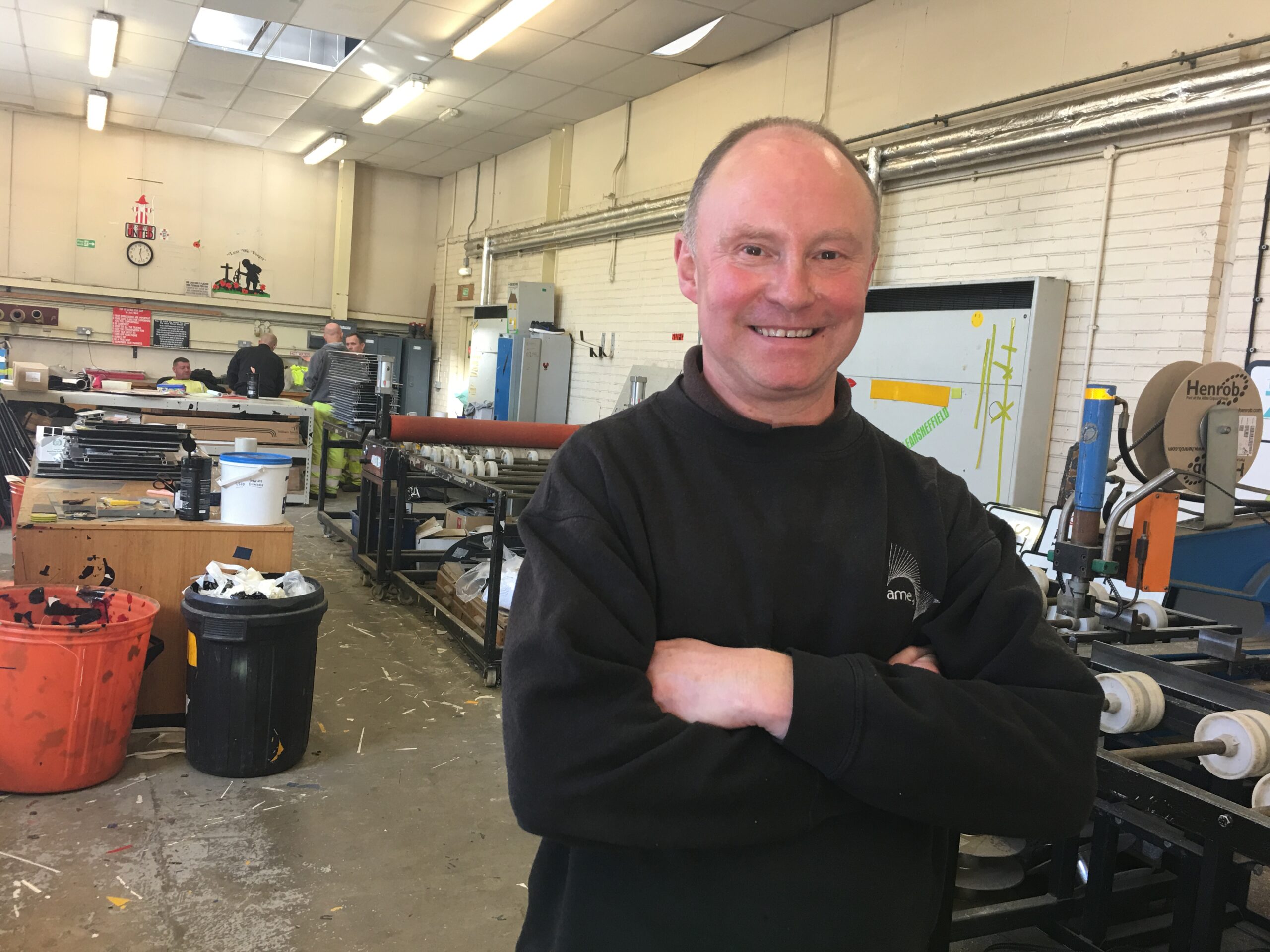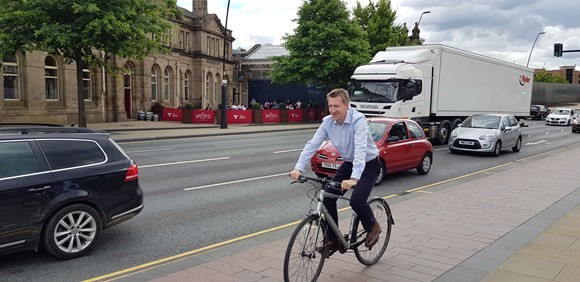Their handiwork can be seen on almost every road in Sheffield.
They tell you where you can and cannot park, what speed you should drive at, and the name of the street.
Most of us see one on a daily basis but have probably never given much thought to the people who make them.
A small but dedicated team of three at highways contractor Amey’s Sheffield depot is responsible for making, repairing and maintaining all the city’s road signs – a small team with a wide reach.
As part of its Streets Ahead contract with Sheffield City council, Amey are tasked with looking after the city’s many road signs.
Since the Streets Ahead contract began six years ago, in partnership with the council, Mathew Shones’ team has made an average of 2,000 to 3,000 permanent and temporary road signs a year.
“A lot of signs may have lost their reflectiveness over the years or may have been damaged,” says Mathew, who is in charge of Amey’s sign shop at Olive Grove and has 38 years’ experience.
“Reports come in and we have a certain number of days to replace them, depending on the importance of the sign.”
When roads and footpaths are being resurfaced, street and traffic signs are checked to ensure they meet national specifications.
The huge highways resurfacing programme means that the sign shop is a continuous hive of activity as work takes place to give drivers plenty of notice of the likely disruption and make them aware of diversions.
A major event, such as the Tramlines musical festival or a cycle race sees the team respond with the appropriate signage.
They were especially busy when the Tour de France passed through Sheffield in 2014 to work on signs named aptly, Le Cote de Midhopestones and Le Cote de Jenkin Road.
Brown tourist signs remain on the route of the Tour – another maintenance job for the men from Amey. Green signs give directions on main roads.
Signs are made at Olive Grove according to strict regulations regarding the colour, size and type of lettering. The higher the speed limit, the bigger the sign.
Some signs are made from scratch, some are assembled with materials from outside suppliers, both using vinyl printing techniques.
“Regulations haven’t changed a lot, but there are now different materials and processes in place,” says Mathew.
“It used to be aluminium, now it’s composite aluminium and plastic – two thin layers of aluminium with plastic in-between. These days, the signs last longer and are a lot lighter to put up.”
Amey has its own team of designers and works closely with the council to agree on final designs.
As winter approaches, they will be ready with their warnings of ice.
It all points to something of an Olive Grove tradition. Cast iron road signs were made there from the early 20th century. These days old street signs on historic buildings will be saved and repaired and cleaned if possible to help maintain the character.
Mathew left school at 16, starting as an apprentice and working for South Yorkshire County Council and Sheffield City Council before Amey.
One of his most memorable jobs was a ‘ducks crossing’ sign for the council in Dore village.
These days his attention is focused on producing signs to alert drivers, inform of speed limits, waiting and loading restrictions, overhead cables and no entries.
And everybody wants to see the Welcome to Sheffield signs looking their best.
“We’re a pretty close-knit team,” says Mathew. “Every day is different and there is so much to do. It is very rare to have a lull, especially with the highways resurfacing. We know what we are doing is essential for the city.”
Unsurprisingly, the job means Mathew has a good geographical knowledge of his home city.
Even so, he’s always conscious of making mistakes. “We have spell check on the computer and a Sheffield street guide, just in case!”








